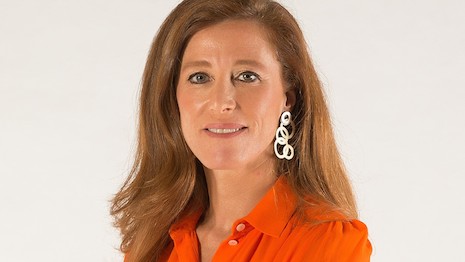- About
- Subscribe Now
- New York,
September 24, 2019

 Helena Amaral Neto is partner of Luxulting. Image credit: Gerardo Santos/Global Imagens
Helena Amaral Neto is partner of Luxulting. Image credit: Gerardo Santos/Global Imagens
France is known as a world leader in luxury, fashion and, once again, in climate change.
In the recent G7 summit in Biarritz, French president Emmanuel Macron announced a unique project, the Fashion Pact. It is a sort of Paris Agreement for the fashion industry, which brings together 150 of the best and biggest fashion brands that have committed to working together to reduce the environmental impact of the industry.
Out of fashion
A few months ago, at the Copenhagen Fashion Summit, Mr. Macron challenged François-Henri Pinault, Kering´s CEO, to assemble the leading companies in the industry to make a change.
The Fashion Pact has managed to gather top companies and brands to collaborate towards common sustainability goals, which is quite an achievement in such a competitive market.
Chanel, Giorgio Armani, Gucci, Prada, Hermès and Burberry are some of the luxury brands that have joined Adidas, Nike and Gap, as well as the fast-fashion giants Zara and H&M, together with heavy weight retailers such as Selfridges and Nordstrom – all together to preserve the planet.
The fashion industry produces around 80 billion items of clothing a year – an average of 10 items per person – and the entire supply and distribution chain has a huge environmental impact.
From water contamination and excess consumption, microfibers, chemicals used for dyeing and farming, greenhouse gas emissions, not to mention rainforest destruction – at a time when the Amazon keeps burning – the cost to the planet is huge.
The damage is increasing as the industry grows.
This is the business model for the fast-fashion industry – and it is a great business as we can see from Zara parent Inditex’s results: low cost and high volumes, quantity over quality.
No planet B
Let us face it, who does not like to buy the “in” T-shirt at a great price? The problem happens a few months later, when that same T-shirt is no longer “in” and is thrown “out.”
Fast fashion is like chewing gum, tastes great for a while and then gets trashed, and replaced by the next one.
Clothing has become so disposable that 85 percent is textile waste, which ends up in a landfill or is incinerated. But there are alternatives to this huge waste and damage, thanks to greater awareness and joint action such as the Fashion Pact.
The green pledge is a recent trend, but one that is here to stay.
As Sir Tim Berners-Lee said, “There is no planet B.”
When I launched my own eco design brand 15 years ago, Tela Bags, the bags and accessories made from reused materials appealed to a niche market. Today, eco friendly brands are increasingly popular among more aware and engaged consumers.
Stella McCartney was the pioneer in the market, and has signed the Fashion Pact, as well as leading a project with Google aimed at quantifying the environmental impacts of cotton and viscose, to guarantee sustainable sourcing.
Prada only uses recycled nylon. Gucci has sworn off fur. Gabriela Hearst uses wool from her own ranch in Uruguay, is a firm beleiver in “honest luxury,” and makes clothes designed to last many generations. Zara is moving into organic and recycled materials.
THESE ARE some of the changes already in place that the Fashion Pact will enlarge.
The goals of the agreement are focused on three targets: global warming (zero greenhouse gas emissions by 2050), biodiversity (protecting species and natural habitats), and preserving the oceans (reduction of single-use plastics).
These ambitious goals mean the signing brands will have to implement wide-ranging changes and undertake major investments.
Green is the new black is so much more than the latest fashion statement. It is a commitment to the future.
Helena Amaral Neto is partner of luxury consultancy Luxulting, Lisbon, Portugal. Reach her at helena.neto@luxulting.com.
Share your thoughts. Click here